-
Posts
270 -
Joined
-
Last visited
Content Type
Profiles
Forums
Store
Help Articles
Posts posted by Baron d'Apcher
-
-
Salaisons.

Viande de Grisons (air-dried Randall-Lineback eye-of-round with herbs. No casing); Bresaola (air-dried Black Angus eye-of-round in beef bung), Saucisson sec (lean Randall-lineback, pork fatback, lucknow fennel, black peppercorn in beef middle). Natural bloom, no starter culture.
-
which is why im wondering why braising is ever used is it just to get the sauce or is it specifically with the moist heat breaking down certain...
Both. And the flavor from reduction of the sauce and caramelization of the protein/garnish can not be achieved in sous-vide.
-
Read Harold McGee.
There are about 40 different cuts that can be harvested from a steer. Consequently, "steak" and "roast" are ambiguous.
-
Scallops steamed in cabbage, foie gras, brioche sauce
Where do you procure your remarkable, wholesale looking seafood?
-
Secca. Air-dried Randall-Lineback eye of round in beef middle. Natural bloom without starter.
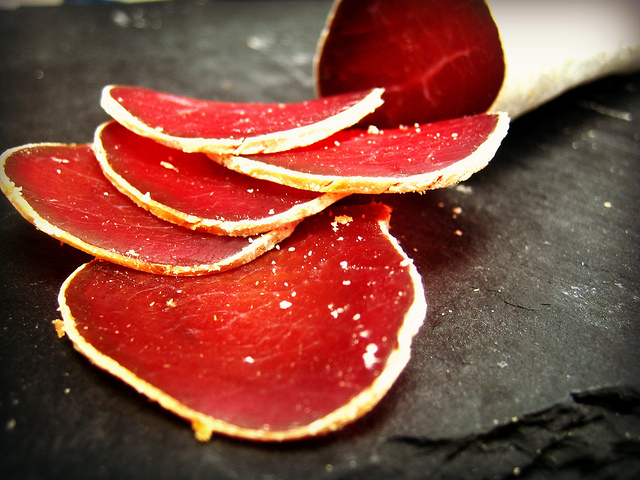
-
I'm looking for a recipe that was in the newspaper here in Broward county, FL years ago, for beef and onions braised in beef consumme (sp?), NOT beef broth. The consumme is the reason I'm posting here. Very tasty! Any ideas ? I've searched the web to no avail.
The consommé is likely beef broth that has been clarified using ground meat and/or egg whites. If cooked slowly enough and properly, a stock or broth will clarify itself with the introduction of protein ie: beef cubes, oxtail, cheeks, shanks, etc... The consommé is then "glued" with gelatin, about 10% by weight and the beef & onions are poured into a mold with the beef aspic. A ruminant alternative to jambon persillé.
-
We'd love to hear more about this dish and the techniques.
The legs were Frenched, the thigh bones removed and a foremeat made from the giblets, the “oyster” muscle, my lardo and herbs stuffed into the opened leg. The leg was tied and poached in a court-bouillon until tender and cooled in the liquid. The resulting liquid was whisked into a roux to make a suprême sauce, then supplemented with 3% gelatin (by weight) to make chaud-froid. The legs were glazed with the chaud-froid, like one would enrobe an item in chocolate and then an aspic fleur de lys découpage (cut-out) was placed on top, a piece of lemon zest for the band and 2 small parsley leaves. The aspic was made from caramelized onion consommé with 10% gelatin, poured in a plate then cut out with ring molds once cold.
I did make a bloody-mary Jell-O mold with vodka, cocktail onions, pimento-stuffed olives with toothpicks in them, horseradish, pickles capers…the works. It was not deemed worthy of photographing for posterity, or consuming enjoyably.
(The following have been posted over the years, forgive the cross-posting)
I experimented with aspic decoupage later with the “5 scented ham with ink-truffle decoupage”. Squid-ink aspic was used to mimic truffle after not being able to find over-the-counter charcoal tablets and failed attempts with coffee and soy sauce. Squid-ink aspic with ham may be all the rage at progressive Jetson’s eateries in Chicago, but it is not a flavor that I crave. At all. Charcoal tablets and truffle juice were used back in the day to make “truffled” aspic without the heavy financial burden.
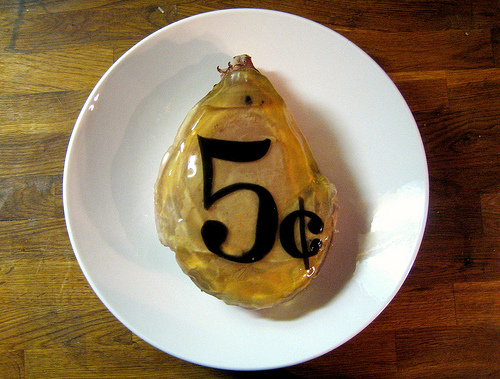
I noodled with whole fish in aspic, clarified white wine court-bouillon (10% gelatin). Deboned through the back (got it ungutted from a Latin market) and stuffed with shrimp, my lardo and espelette. In hindsight, not the best choice of fish –too soft of flesh. Put a light coat of aspic on the meat (removed the skin) and shingled blanched carrot slices. Lined an oval dish with plastic wrap and made a mold of sorts. Melted away the excess with a torch.

I revisited chaud-froid with “Chichen galantine with Robert Delaunay “Joie de Vivre” chaud-froid and Venn Diagram aspic”.
Boneless chicken, stuffed, poached then coated in chaud-froid and decorated with pepper Venn diagram motif. Glazed in clear aspic at the end.
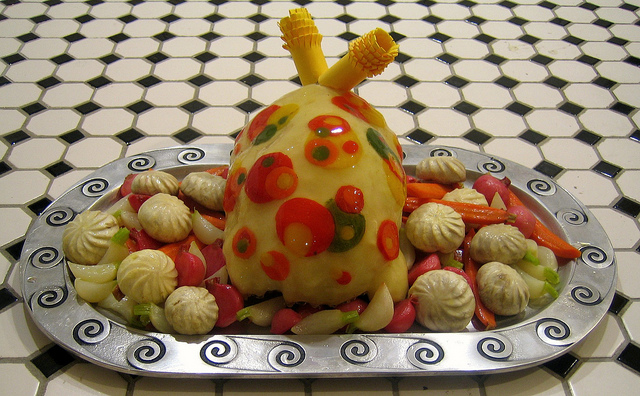
I used food coloring to make a Swedish ham, and a blow-dryer to fuse the aspic –not the smoothest finish, and kind of crooked.
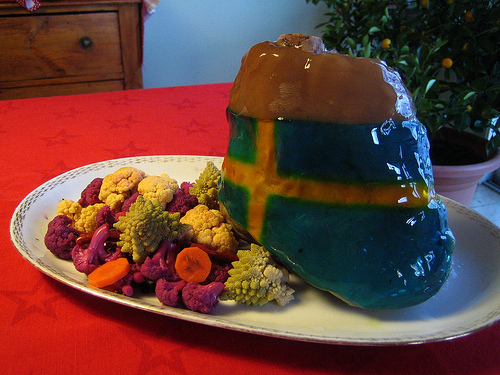
I recommend using a scale and grams to ensure reliable and consistent aspics. 1.8% salt and either 8-10% gelatin depending on the body of the initial liquid.
-
Did someone write "aspic"?
Chicken jambonneau en chaud-froid with aspic découpage. ca. 2009
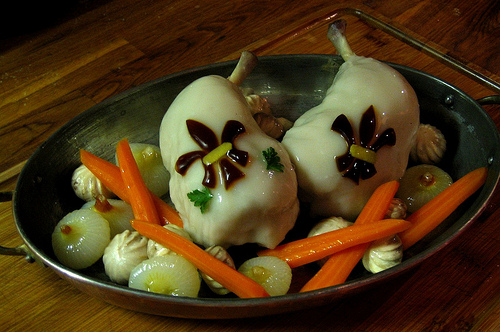
-
 1
1
-
-
Consider stuffing the breasts on the rib cage (épigramme d'agneau). Delicately cut a passage through the meat, against the bones, fill with a forcemeat (bound with bread/egg/cream) garnished with whatever, fill the cavity using a sausage press or pastry bag and roast after a gently sear. Cool, cut and reheat using the accumulated juices.
Niçoise olives, pistachios, fatback, lamb kidney, liver and heart.

-
-
Pigeon, Gin-Soaked Currant and Toasted Almond Pâté en Croûte: Special Longshot Dark-Meat Horse Edition. Submission to qualify for the 2012 World Pâté Croûte Championship in Tain l’Hermitage, France.
No dove, no love

Pastry feathers and almonds; juniper berries and culeb peppercorns as currants.
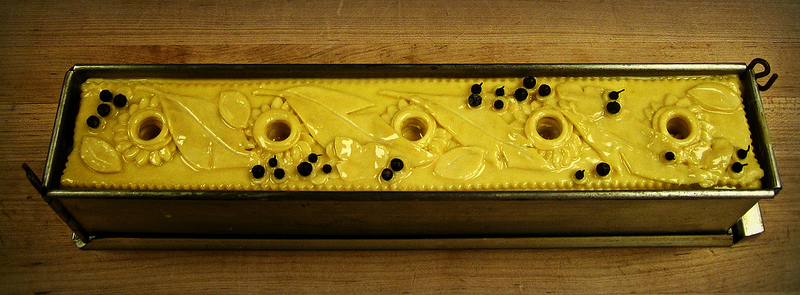
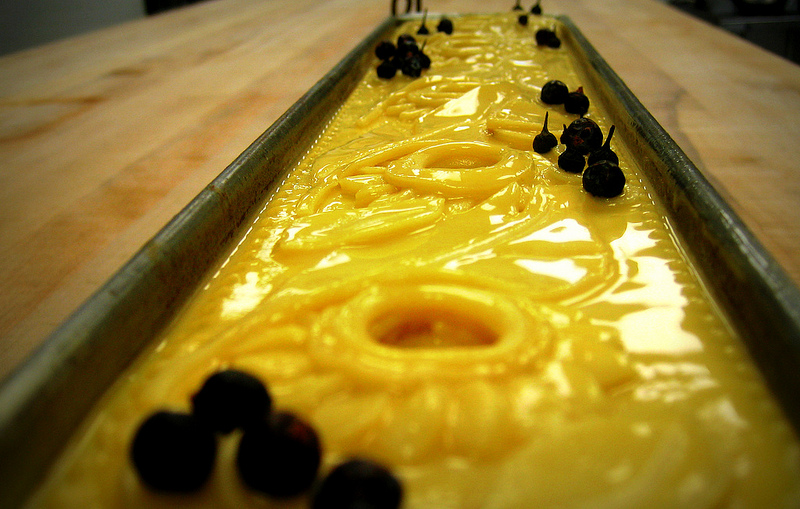
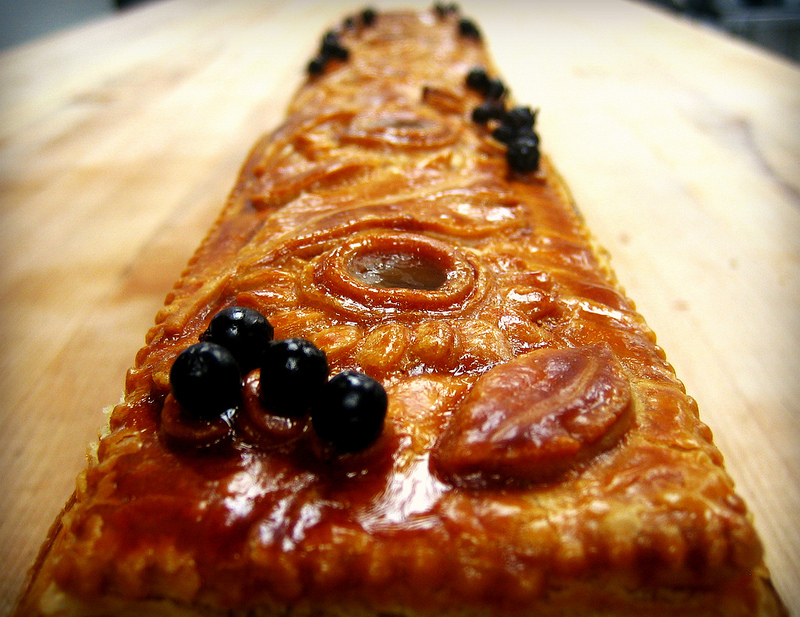
Pigeon breast, liver farce à gratin, gizzards, almonds, currants, fatback, whathaveyou.
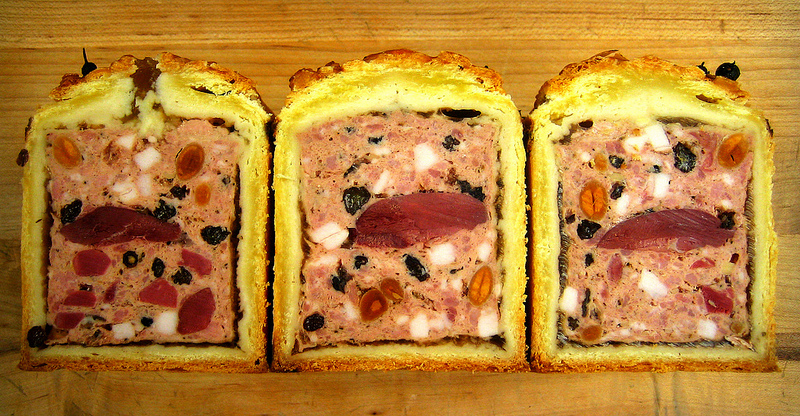
-
 1
1
-
-
Randall-Lineback Rose Veal Ribeye.
Dry-aged 4 weeks. The bones are Frenched and the Complexus, Spinalis and Longissimus Dorsi are separated to remove the sinew and any membranes. Given the lean nature of the animal, kidney fat is inserted in between and the whole sewn shut. Fatback bards the outside and is garnished with lemon and orange zest.
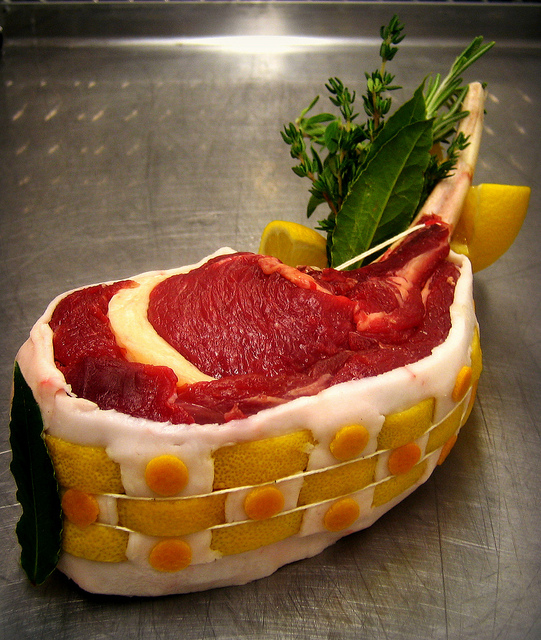
-
Sour Cherry and Randall-Lineback Pâté en Croûte beats Harvard and Yale: Special Ivy League Edition.
Pork, Randall-Lineback rose veal, corned tongue, confit heart, Sicilian pistachios, green peppercorns and such.
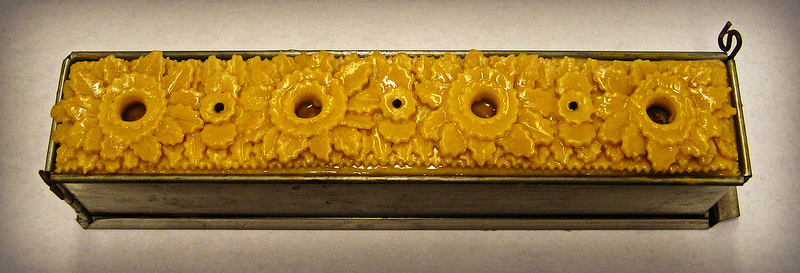
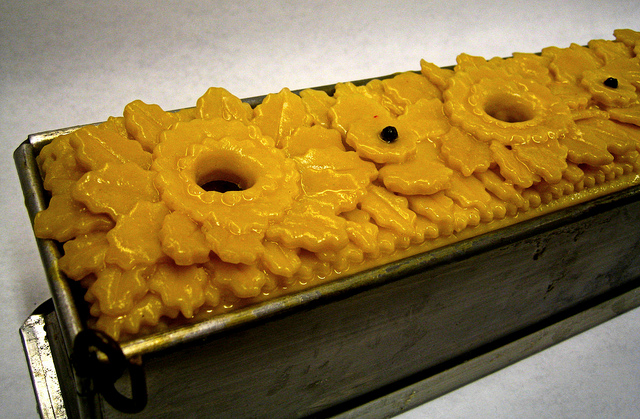
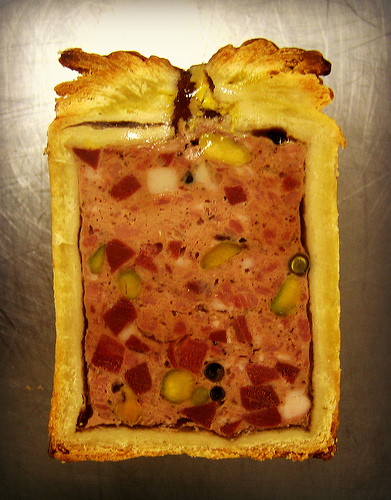
-
 1
1
-
-
Rose Veal Paupiette à la Richelieu.
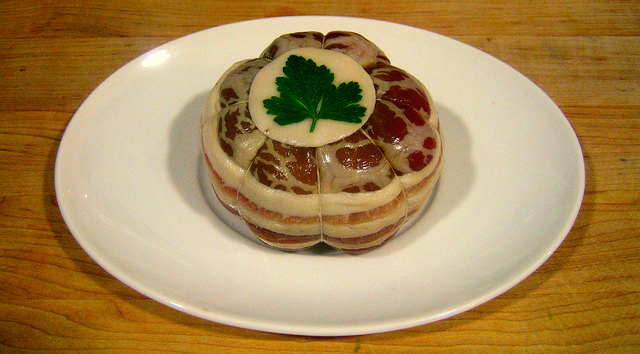
Rose veal paillards wrapped around ground pork seasoned with roasted garlic, rosemary and olive oil-cured tomatoes. Barded with caul fat, my ventrèche and a fatback calotte. Gently roasted with corn, striped roman tomatoes and dutifully basted.
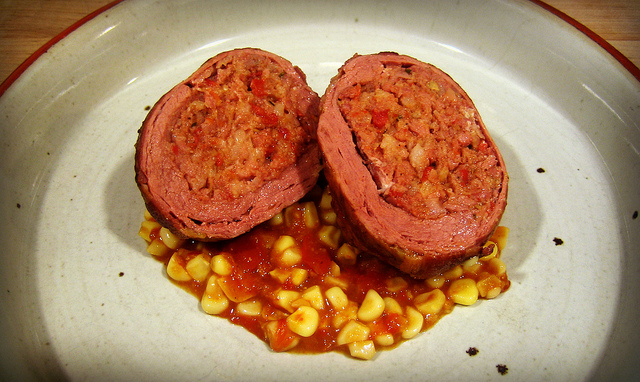
-
Chicken galantine. Amish chicken bathed in Madeira and brandy. A garnish of the breasts, Jamón Ibérico, confit gizzards, fatback and green peppercorns. Wrapped in its skin, then in cheesecloth. Gently poached, traditionally, in court-bouillion. Lemon zest and dhania coriander seasoning.

Gin-soaked currant and toasted Marcona almond pâté. Some heart, corned tongue, smoked deckle and thyme all up in there. Currants and slivered almonds along the top.

-
 1
1
-
-
They barely held together while cooking, but the coarse grind gave them a nice bite, and the meat developed a really nice crust.
Consider grinding and forming the patties the night before. Mixing the meat well and allowing it to rest overnight allows the proteins to do their thing and stick together better. In the case of hamburgers, freshest is not necessarily the best.
-
Cooked it for 2 hours at 63C totally immersed. Then decreased water level to below the sides of the terrine and cooked still at 63C but more Bain Marie style and checked core temperature with my thermoworks thermometer. I finished cooking when core was 60C.
The pâté looks good, but sous vide, like explosives, profanity, cologne and truffle oil should be used sparingly and extremely judiciously, though those limits can be subjective. However, objectively, 60C/140F (medium doneness in the US, just above saignant for the French) is far too low of an internal temperature for a cooked pâté and keeping a forcemeat at that low of a temperature can be dangerous. Pâtés and virtually all cooked charcuterie needs to be cooked to an internal temperature of 70C-78C/158F-172F. If the pâté is soft and spreadable, it is because it is undercooked. 60C/140F is on the cusp of the temperature needed to kill harmful bacteria. A singular beef muscle cooked to 57C/135F is fine (the paranoid fantasies of the health department might dictate otherwise) because -with proper handling- there is virtually no chance of there being any bacteria inside. Forcemeats on the other hand and ground up, containing hundreds if not thousands of pieces of meat that are exposed to more surfaces, hands, air and whatever with infinitely more surface area. Initially, the European Union wasn’t too jazzed about transglutaminase because of the risks that come with gluing various pieces of meat together and cooking them at a temperature that does not kill bacteria. Now if the Europeans (ground zero for charcuterie, raw milk and unpasteurized cheese) have concerns that relate to food, then it is probably a big deal.
If you are going to eat the pâté in 1 sitting, no problem. However, if there are eggs in it and you are going to store it for a while or take it in and out of the bag over the course of a few days, you run the risk of the pâté falling apart, developing off flavors and at the very worst, making someone sick and that certainly isn’t worth shaving off 10 degrees, even during the Olympic games.
I cook hams sous-vide (it helps keep the shape in lieu of elusive molds & presses), spalla-cotto, bacon (to 140F for firmness to avoid having to freeze it for slicing) occasionally cotechino and leftover pâté forcemeat in casings (all in 72C water until and internal temp of 70-71C), but placing the entire pâté along with the terrine sous-vide strikes me as an excessive and unnecessary use of resources. I use the vacuum machine to pack the forcemeat but after that, terrines in a bain-marie in a 150C/300F oven uncovered, no convection for 2 hours until internal temp of 71C/160C works just fine, as it has for the past 2 centuries. Uncovered allows the top to caramelize a bit which adds sweetness and evaporation concentrates the flavors (more-so with the convection, though it has a tendency to break the caul-fat). Roasted prosciutto tastes better than boiled prosciutto. After cooking the expelled juices are tossed and a flavorful, hot broth is poured back over for the pâté to absorb. By cooking the pâtés at such a low temperature you also run the risk of the forcemeat breaking.
-
 1
1
-
-
Morue à la Catalane.
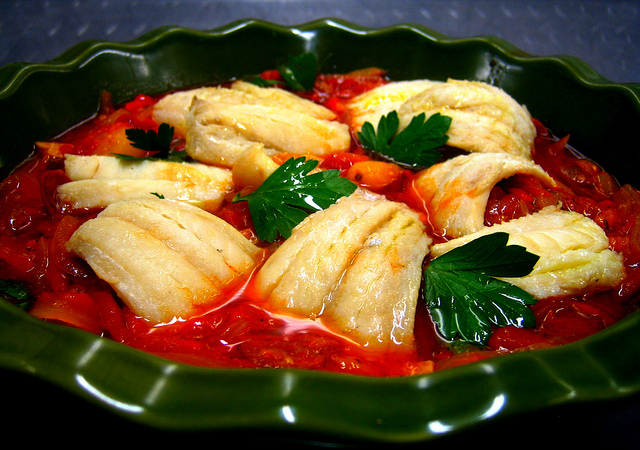
Gently poached salt cod in a stew of piquillo and carmen peppers, tomatoes, dried chorizo, red onion, sherry vinegar and capers.
-
Forgive me, but this query deflates my whipped cream. It offends my stubborn, hopelessly dated, classical, luddite, cheerleader of faded French culinary sensibilities. However, so as not to denigrate the endeavor in its entirety and contribute to the forum, consider the following proportions (though you may have to decrease the fat so that the mixture does not break at an ambient temperature):
4 parts livers
2 parts fat
1 part booze
1 part allium (shallot, onion or leek and eventually mushrooms)
Aromatics, #1 curing salt, spices, whathaveyou,
I am a staunch proponent of producing an exceedingly smooth, deceptively light, richer than Croesus parfait that spreads like warm butter supplemented with Astroglide. The aerated “parfait” Scott links is a bit far from the traditional formulation of what I qualify as a parfait (farce à gratin) and the textures are not comparable. The ingredients and method linked by Mr. Wink is traditional, tried and true…though I have never used cream.
I feel that a whipped cream dispenser is best used to whip cream and that a proper liver parfait is and should always be seared chicken livers, fat, booze, alliums, aromatics, spices and whatever, blended, chilled then covered with aspic (inlaid with suitable garnish) to prevent oxidation. I’ve had far too many whipped imposters and foams, which, though clever, are often veiled shortcuts sidestepping the technique, discipline, and finesse of cookery fundamentals under the guise of progress and never as good as the real McCoy. There seems to be this urge to fabricate dishes differently in an effort to surpass convention by eliciting the wow effect prototypes usually generate at auto shows. More often than not, the novelty fails to trump the taste or practicality. The form excreted from the whipper can be no more elegant than a foamy turd and the sound it makes conjures the cheap thrills of a carnival birthday party. A potted parfait for me elicits a rare standard of craftsmanship and measure of skill. The whipped one, not so much. But my tastes are my own.
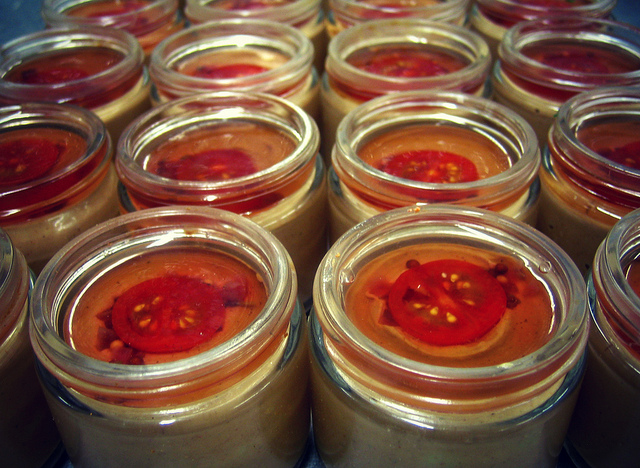
-
My mortadella.
Bung ho!
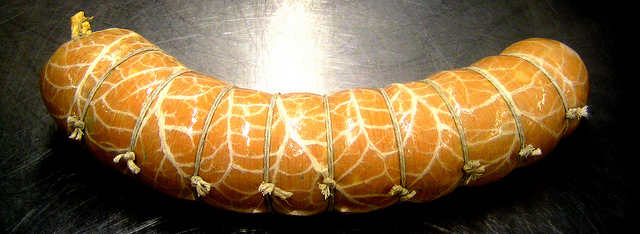
Hot-tub tubesteak
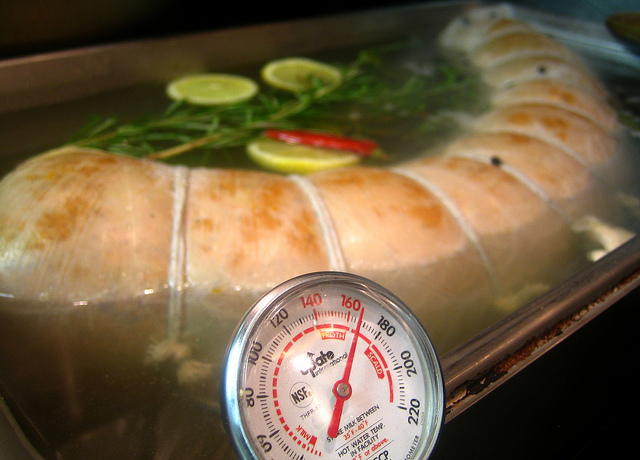
Bologna constellation
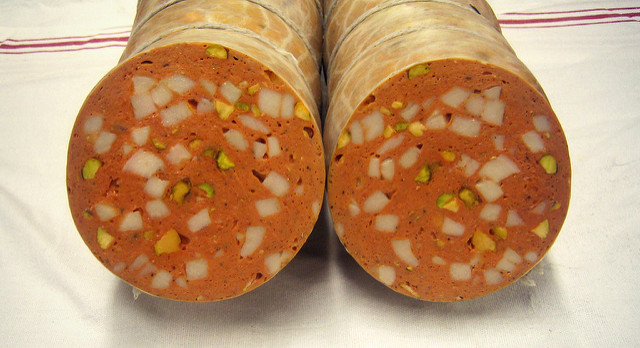
-
Pied de Cochon Farci.
Stuffed trotter, or Zampone. Pork stuffing with brandy-soaked apricots, smoked belly, simmered shank, fatback and pistachios. Slow roasted with verjus and glazed with its juices.
Up yours, Manolo.
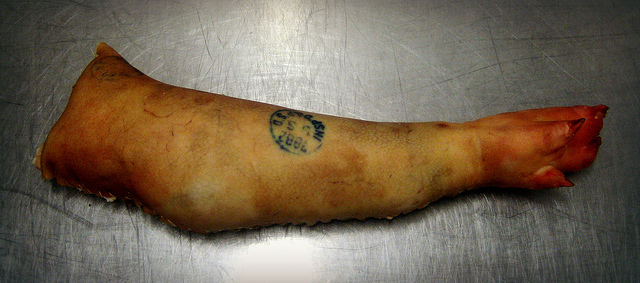
Garden footrest
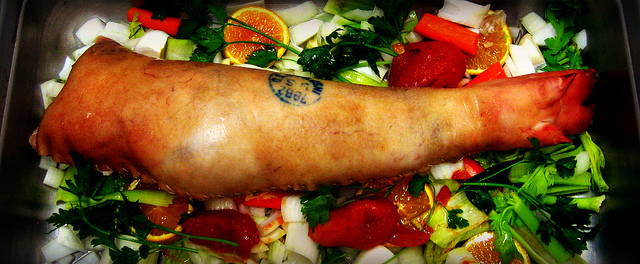
The Right Stuff
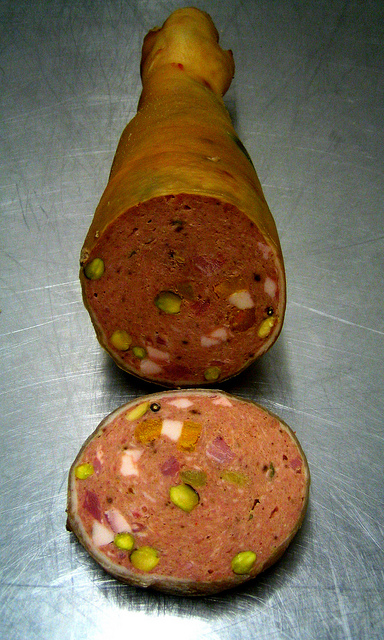
-
 1
1
-
-
Consider the "melon-style" lamb shoulder. Remove the shoulder from the carcass, cutting the shank and deboning the shoulder from beneath. Shape and truss so that it resembles a melon or pumpkin. Slow roast for 4-5 hours.
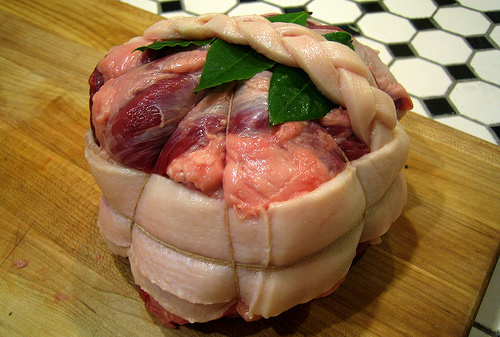
As for the saddle, keep the flank attached to the loin and separate the 3 flaps above the navel, removing the membrane and silver skin. Make a compound butter of your liking and spread along the bottom of the saddle, inser the tenderloin, wrap the flanks around and truss. It will make a barrel of sorts with the loin on top, flank at the bottom and tenderloin in the middle.
Cut the ribs on the rack shorter and stuff the breast plate with a forcemeat made from the trimmings, liver, heart and kidneys.
Or, for a more festive occasion, debone the whole animal and stuff with a forcemeat supplemented by greens. Wrap in caul fat and roast.
25lb goat.
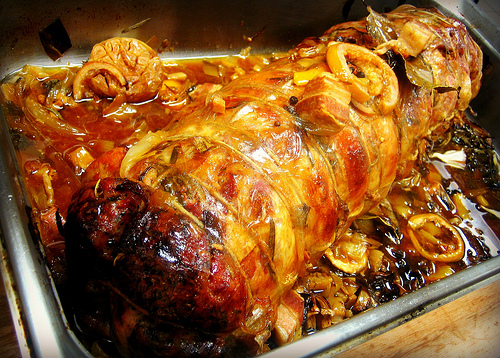
-
Jambonneaux.
Boneless, pressed, shank hams.
Shankscicle.
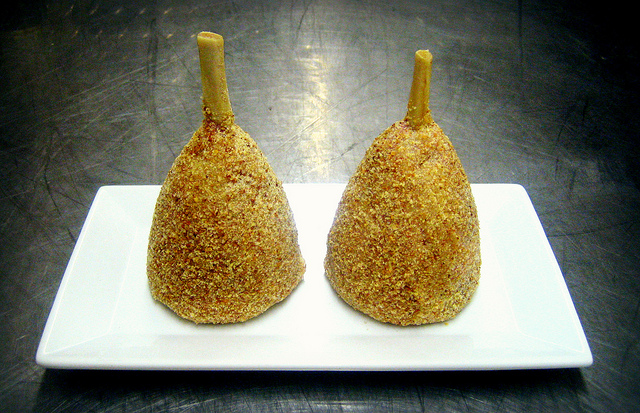
Shanks (jambonneaux) are brined, simmered, picked and packed into spring loaded cast-aluminum molds. There is a hole at the bottom of each cavity so that a whittled ulna or fibula bone can be inserted into the "ham" to mimic a larger bone-in ham. The pressed shank is then rubbed with lard and coated in toasted breadcrumbs. Eaten cold with condiments.
Press to impress.
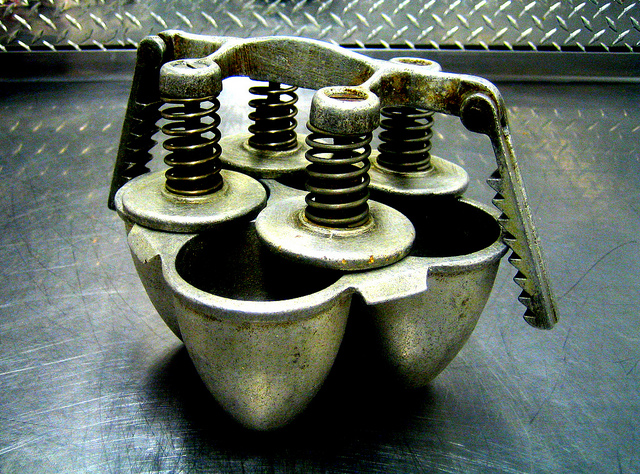
Fab Four.
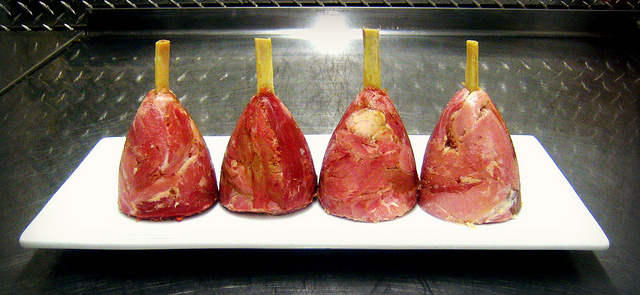
-
 1
1
-
-



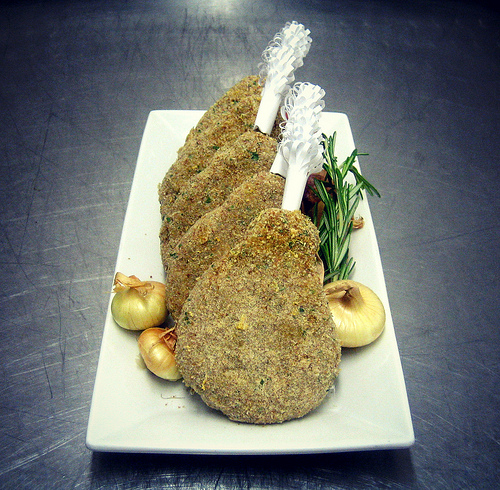
Charcuterie: Dry-Cured Salami / Salumi
in Cooking
Posted
I weighed the cleaned eye-of-round, made my salt, sugar, #2 and spice calculations and divided that in half. I applied half the mixture to the meat and wrapped it in plastic wrap for 3 days, refrigerated, pointed towards the Alps. After 3 days expired, I applied the second half of the mixture for another 3 days and yodeled sweet things to the meat. After the second curing period I wiped the eye-of-round clean of curing mixture, wiped with vinegar soaked cheesecloth and rolled it in chopped herbs (thyme, rosemary, marjoram, oregano). The second phase involved wrapping the eye-of-round in cheesecloth and hanging it in the walk-in for 3-4 weeks. After losing about 25% of the weight and developing a bloom, the rounds were pressed between pieces of wood to give it the characteristic shape I have seen and to help in drying.
The texture and flavor is pleasant, perhaps a bit musty, but a worthwhile endeavor. Truth be told, I preferred the secca.